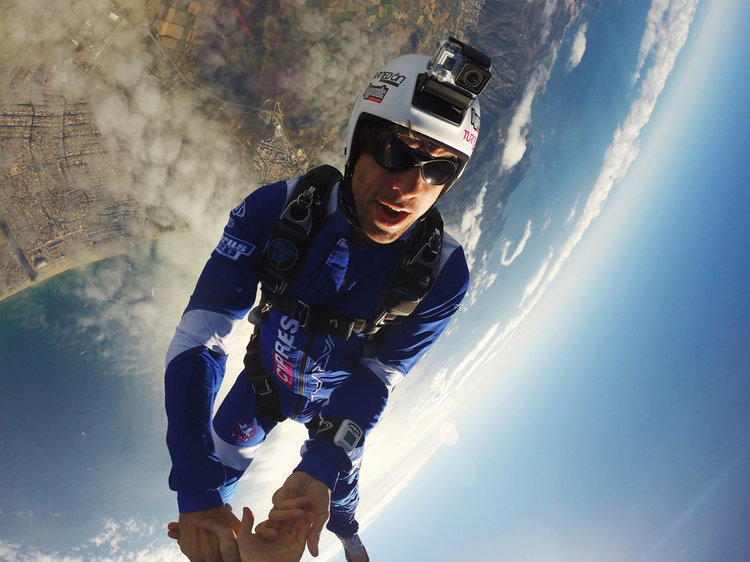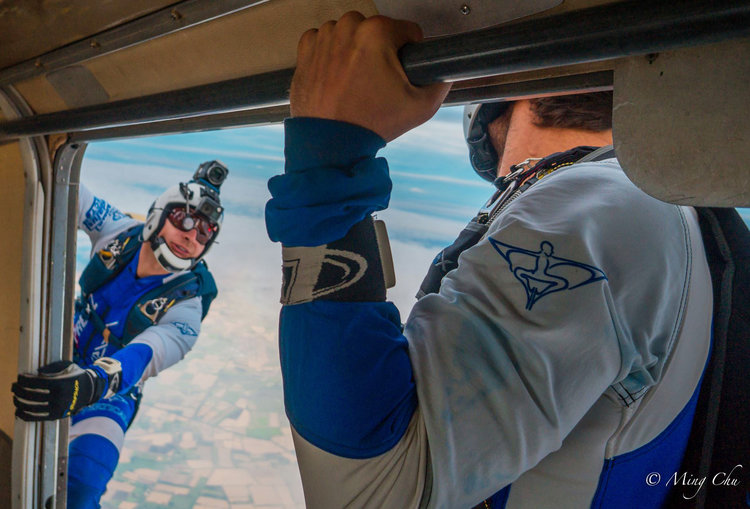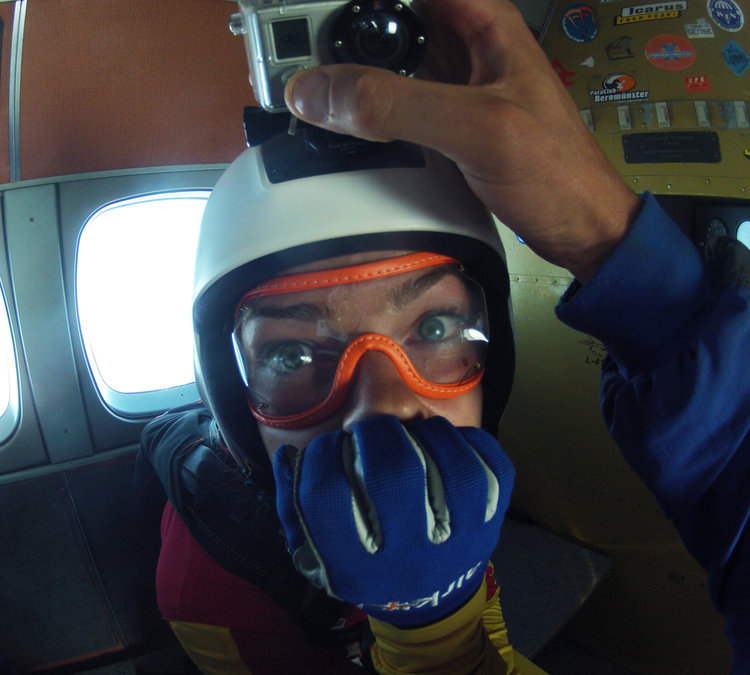Originally published on Dropzone.com in January of 2017.
If you add a little pressure, simple things can quickly become not-simple things.
For the amount that most of us understand about how they really work, the modern cameras we employ for skydiving are close enough as to be made of magic. Yet despite their tiny size, amazing quality and all-round wonderfulness – we still regularly miss out on capturing quality footage of a jump for the most arbitrary reasons. A little bit of forethought and the application of a simple routine can aid ones consistency when it comes to getting the shot.
You may well snort derisively and roll your eyes at the thought of reading an article about how to switch a camera on – yet let you that has never missed a great bit of action for the sake of some small piece of angry-making bullshit stupidity cast the first stone. The best analogy I have to represent the advantages of a sensible and efficient method for a repeated process is to think about packing and how much of a frustrating pain in the ass it was (be honest) at the start. Learning to pack and getting it right is not only about understanding the need to fold your parachute a certain way so it will go into your container (and come out again) – it is as much about the knowing right spot to put your knee so the fabric doesn’t escape and where to hold it down with your elbow so you can have both hands free for the next bit. How many things in your life are there to which you can draw parallels with this?

There is much satisfaction to be found in developing your ability to get ready quickly and efficiently in the plane. Here are a few tips:
The Plan:
Adding things to your in-aircraft routine should not come at the expense of any of the stuff you have learned to do that makes you safe. If you are skipping over running through your drills because you are constantly fucking around with your camera you might forget them at the crucial moment – so don’t. Even in the speediest of flying machines you have time to do things both necessary and desirable, but always remember your priorities. Checking that your pilot chute is not hanging out is vastly more important than which recording mode you are in.
Lenses:
It is very easy to get some manner of obfuscating crap on your lens. Action cameras all have teensy little apertures onto which a single grubby fingerprint is enough to ruin your footage of the bestest jump ever and make you very sad. Condensation is very popular too – especially with big temperature changes from altitude to ground level. Moisture developing on (or even in) your camera during a jump is unavoidable but not cleaning it up before the next one definitely is.
You should have a suitable cleaning cloth somewhere about your person – tucked away into the lining of your helmet is good as it makes it very difficult to bring one without the other. For extra points, you can attach it to your helmet with some string, or you could even carry a spare one which you might magnanimously gift to some clothless boob and appear as a minor hero/enormous geek in front of like four people.

Cutaway:
More and more frequently dropzones are requiring that any helmet with a camera on is fitted with a cutaway system – which are available in many forms and levels of quality. The best idea is always invest in a good one that someone has made using science that will actually work rather than bodge something together yourself from that box of old skydiving bits you keep under your bed for no good reason.
A worthy part of your pre-jump process is to give this a quick look and see if all is well, and that nothing has become worn or unseated that might result in no camera attached to your head and some cognitive dissonance about whether you can be bothered to scour the landscape looking for it.

Using Time:
For maximum sensible-ness you should perform your camera checks with enough time that you can fix potential problems without freaking either yourself or anyone else out if something is amiss. Realising on jump-run that your memory card is full or your lens is dirty is too late. If you had a spare thirty seconds you might be able to go into your settings and delete something to free up space, or give the front a quick clean – but not when everyone is already climbing out on the side of the plane and waiting for your ass.
Conclusion
Being correctly prepared in a timely fashion is but one step in getting good footage, yet an important one. Felling relaxed and properly ready lends itself to nailing the jump, and the exact form of your personal routine will develop with time and practice. Stick to the plan, don’t bump your head on the way out, and remember that you get what your head is pointing at, not just your eyes.
